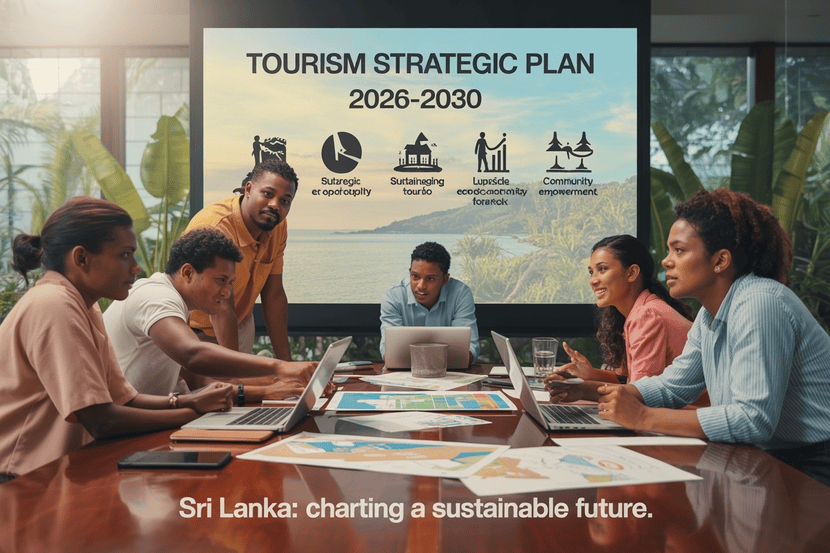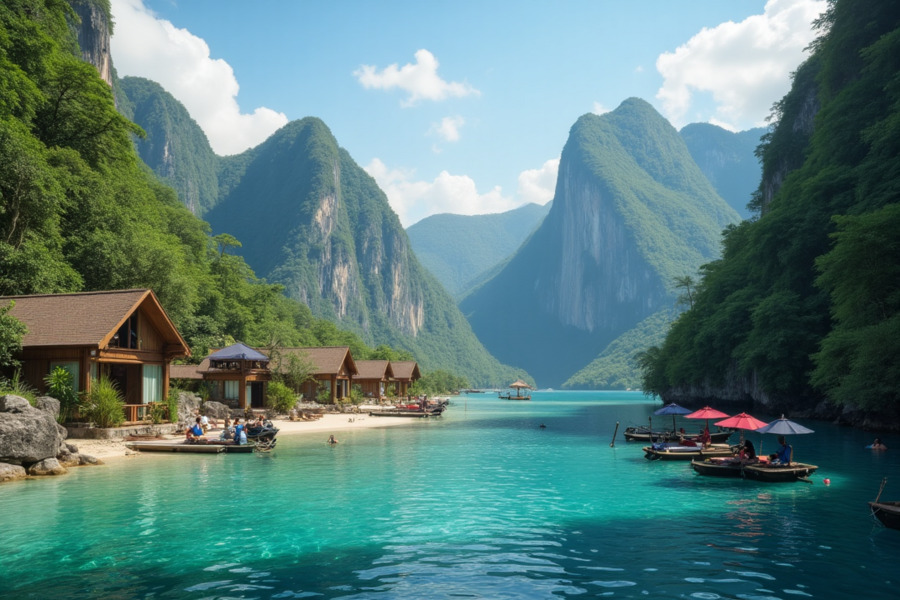≡-Vail, Colorado and Western U.S. Mountain Resorts See Booming Summer Tourism Revival with Growing Visitor Stays and Expanding Travel Demand Is This the Dawn of Lasting Growth Despite Economic Uncertainty? – Viral of Today
<> Viral of Today <>
Home » TOURISM NEWS » Vail, Colorado and Western U.S. Mountain Resorts See Booming Summer Tourism Revival with Growing Visitor Stays and Expanding Travel Demand Is This the Dawn of Lasting Growth Despite Economic Uncertainty? Published on
August 23, 2025Vail and Western Mountain Resorts Show Early Signs of Stronger-Than-Expected Summer Tourism Amid Economic UncertaintyAnalysts in the travel and tourism sector observed that as the summer season approached its end, mountain resort towns across the western United States were exhibiting early signs of a more robust tourism period than initially anticipated, even as economic uncertainties continued to influence traveller behavior. Reports examining 17 key western destinations, including Vail, Colorado, Sun Valley, Idaho, and Jackson Hole, Wyoming, indicated that hotel and rental bookings had increased by roughly 1% compared to the same timeframe in the previous year.Earlier in the year, industry experts had described the market as being in a “malaise,” citing the longest slowdown in bookings for mountain resorts since the COVID-19 pandemic. Analysts suggested that the modest rebound in reservations could largely be attributed to lowered property rates, as hotels and local businesses adjusted their pricing strategies to attract more visitors. Data highlighted that summer rates had softened by 1.9% year-over-year for the first time in nearly two years, which helped stimulate both occupancy levels and the pace of bookings.In destinations such as Vail and Beaver Creek, Colorado, experts noted a marked shift toward last-minute bookings, often made just weeks before the planned visit. This trend made it increasingly challenging to accurately forecast visitor numbers. By early August, reports suggested that occupancy levels and overall visitation were stabilizing, with tourism leaders describing the situation as “firmly okay.” Analysts emphasized that while the season did not break historical records, it showed a slight improvement over the prior year, even amid turbulent and unpredictable market conditions.Variations in Visitor Trends Across DestinationsExperts noted that visitor trends were not uniform across all mountain towns. For instance, Breckenridge, Colorado, reportedly experienced a 14% decline in overnight stays during the summer months. Despite this, officials highlighted that day-trip traffic remained strong, indicating that shorter visits continued to support local economies even when overnight bookings decreased.Analysts suggested that such variations underscored the importance of destination-specific strategies, as the needs and preferences of travellers could vary significantly across resorts. While some destinations faced challenges due to declining extended stays, maintaining robust day visits, local attractions, and special events was critical for sustaining economic activity and visitor engagement.Economic Environment and Cross-Border Tourism EffectsLooking forward, industry experts emphasized that the uncertain economic environment, influenced by tariffs and broader market fluctuations, was expected to continue shaping domestic and international travel patterns. Reports highlighted that Canadian tourist visits to U.S. mountain resorts had decreased by nearly 58%, underlining the profound effects of cross-border economic changes on regional tourism.Experts indicated that such declines were not only a concern for individual resorts but could also have global repercussions, influencing itineraries, tourism revenues, and service delivery. The interplay of fluctuating exchange rates, tariff adjustments, and general economic caution was seen as a factor with potential to influence traveller behavior worldwide, particularly for destinations heavily reliant on international tourism.Operational Flexibility and Adaptive Pricing StrategiesObservers suggested that resort communities should focus on aspects that they could control, especially as the ski season approached. They stressed the importance of maintaining high service standards, providing value for travellers, managing competitive pricing, and improving flight and transport accessibility to simplify travel logistics. Analysts highlighted that such proactive strategies could help sustain interest in resorts and maintain occupancy levels even amidst broader economic uncertainty.Key operational measures included:Implementing adaptive pricing strategies to stimulate demandMonitoring real-time booking trends, particularly last-minute reservationsUnderstanding traveller behavior, including overnight stays versus day tripsExperts emphasized that dynamic and responsive operational approaches allowed resorts to appeal to a broader range of travellers and optimize revenue management. By implementing modest rate reductions, properties were able to attract additional visitors, offsetting the effects of market volatility.Analyzing Visitor BehaviorExperts underlined the significance of understanding visitor patterns across different travel types. While some areas experienced declines in longer stays, strong engagement in day visits helped maintain economic stability. Maintaining high visitor satisfaction through accessible transportation, streamlined check-in processes, and personalized services was crucial for encouraging repeat visits and fostering positive word-of-mouth recommendations.Industry observers noted that tracking last-minute booking trends and other behavioral shifts was essential for anticipating demand fluctuations. This intelligence allowed resorts to optimize operational efficiency while ensuring a high-quality experience, which in turn strengthened both occupancy rates and revenue streams.Economic and Global Travel ImplicationsAnalysts emphasized that fluctuations in the economy, including tariffs, currency shifts, and broader market volatility, had far-reaching effects on travel patterns. Destinations that depended heavily on international tourists, particularly Canadian visitors, were especially susceptible to these changes. Experts highlighted the necessity of monitoring such trends and adjusting marketing and operational strategies to mitigate negative effects and maintain steady visitor numbers.Additionally, experts observed that travellers’ perceptions of value, service quality, and convenience had a significant influence on their decision-making. Resorts that focused on improving the overall visitor experience—through efficient transport access, competitive pricing, and exceptional service standards—were better positioned to attract both domestic and international tourists.Observers also indicated that localized economic fluctuations could have indirect global effects, as shifts in affordability or travel preferences in one region often influenced broader itinerary planning and destination selection worldwide.Strategic Priorities for Resort CommunitiesAnalysts recommended that resort operators focus on factors within their control, such as service quality, pricing policies, and accessibility, to remain competitive and resilient. Delivering exceptional value while maintaining reliable infrastructure for guests was considered essential for weathering broader economic pressures.Key strategies included:Optimizing pricing structures and enhancing value perception for guestsImproving flight and transport accessibilityMaintaining high service standards to encourage repeat visitationObservers concluded that proactive operational planning and flexible strategies were critical to navigating volatile market conditions. Understanding regional differences in visitor behavior and last-minute booking trends was key to maintaining occupancy, sustaining local economies, and preparing resorts for future tourism recovery.Global Implications for the Travel IndustryExperts noted that the trends emerging from mountain resort towns could have broader implications for the global travel sector. Resorts that implemented adaptive pricing, data-driven operational planning, and visitor-focused enhancements were better positioned to withstand economic uncertainty and maintain competitiveness.Analysts emphasized that these approaches could serve as a model for other destinations, showing how flexibility, careful monitoring, and strategic focus could stabilize tourism revenues even in fluctuating economic environments. Additionally, the observed trends suggested that travellers increasingly valued convenience, affordability, and quality experiences, which could shape travel planning on a global scale.The sharp decline in Canadian tourist visits highlighted the importance of understanding global economic interdependencies and their influence on tourism flows. Resorts that adapted effectively were likely to gain a competitive edge, positioning themselves for long-term recovery and growth in international and domestic travel demand.Industry observers concluded that although the summer tourism season in mountain towns faced challenges, including economic uncertainty and variable visitor patterns, modest rebounds in bookings and adaptive operational strategies provided a clear path forward. Analysts highlighted that a combination of dynamic pricing, focused operational management, and enhanced visitor experience could help resorts maintain resilience, competitiveness, and profitability.Experts suggested that these methods could influence broader industry practices, encouraging other destinations to adopt flexible, data-driven approaches to navigate market fluctuations and maximize tourism outcomes. By prioritizing service quality, value perception, accessibility, and strategic adaptability, resorts could mitigate the impact of economic uncertainty, stabilize visitor engagement, and position themselves for sustainable growth in both domestic and international markets.Ultimately, observers concluded that the experiences of Vail, Colorado, along with other western mountain towns such as Beaver Creek, Breckenridge, Sun Valley, and Jackson Hole, underscored the critical importance of proactive planning, operational flexibility, and responsive pricing in achieving successful tourism outcomes. By focusing on controllable factors, resort communities could navigate turbulent market conditions, retain visitor loyalty, and ensure long-term economic sustainability, setting a precedent for destinations worldwide.
This information will surprise you!
See also
- Read until the end to discover everything.
- Important information you need to know.
- Interesting facts and helpful tips.
Conclusion
Did you enjoy the news? Keep following us daily!













